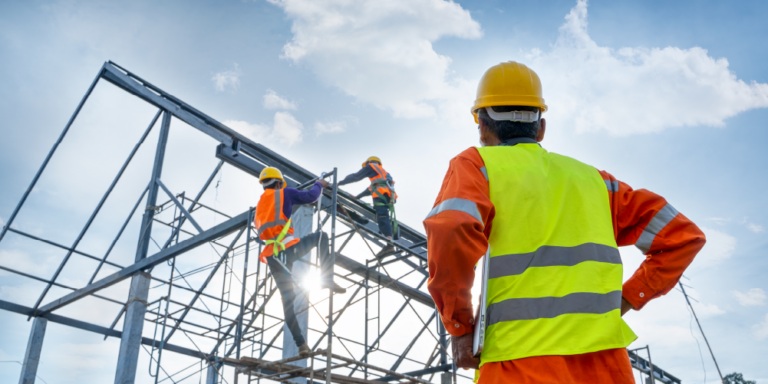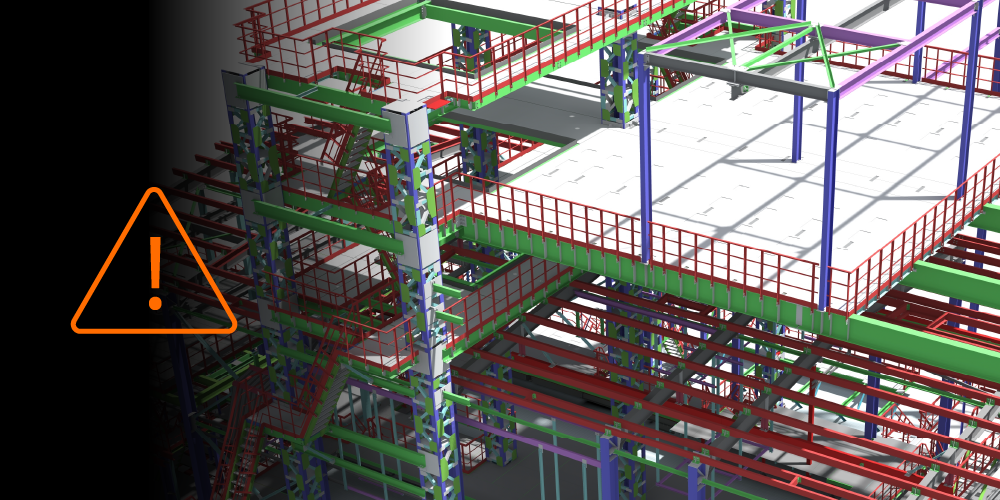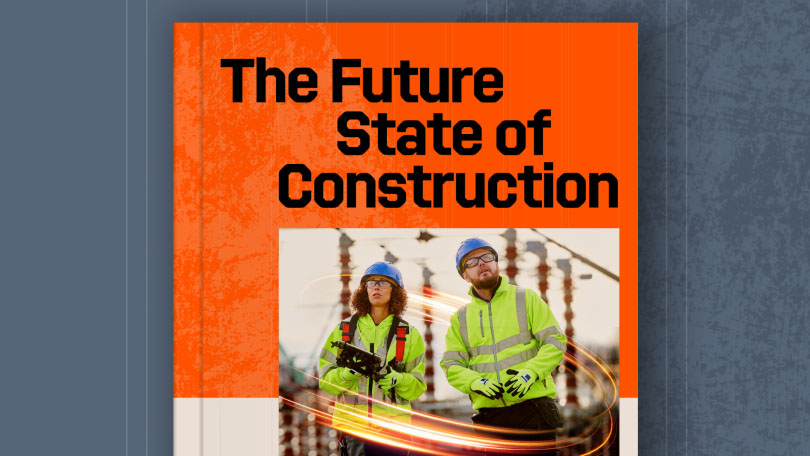Related Articles
— 9 min read
Construction PPE: Reducing Risk, Protecting Reputation, and Meeting WHS Standards

Last Updated Oct 30, 2025

Josh Krissansen
47 articles
Josh Krissansen is a freelance writer with two years of experience contributing to Procore's educational library. He specialises in transforming complex construction concepts into clear, actionable insights for professionals in the industry.
Last Updated Oct 30, 2025

For most of the world, the term ‘PPE’ became a known hot topic during the 2020 pandemic.
But for contractors, construction PPE is just a part of their everyday priorities — one that protects them, both personally from injury and professionally from the types of failures that lead to shuttered projects, six-figure fines, and damaged company reputations.
Regulators are unafraid to prosecute and set examples for the entire industry. Under WHS law, failing to provide and enforce protective equipment leaves businesses exposed to prosecution, financial loss, and regulator scrutiny.
In 2024, a Victorian mining company was fined $400,000 for failing to protect workers from silica dust exposure. Furthermore, beyond compliance, inadequate PPE leads to accidents that result in compensation claims, delays, higher insurance premiums, and lost tenders.
So while construction PPE might seem like something contractors can take for granted, it’s an essential part of site culture. In this article you'll learn what constitutes construction PPE, the risks associated with inadequate or incorrect usage, and the steps companies should take to ensure compliance and protect their workforce.
Table of contents
What is Construction PPE?
Construction PPE, or ‘personal protective equipment,’ includes specialised gear and clothing designed to protect workers from hazards that cannot be eliminated through other controls. It sits at the bottom of the WHS hierarchy of controls as the last line of defence, addressing residual risks after hazards have been removed or reduced.
Construction PPE covers a wide range of hazards, including falls from height, falling objects, struck-by incidents, loud noise, dust, chemicals, and low-visibility conditions.
Hard hats
Prevent head trauma from falling objects or collisions
Safety glasses
Protect against flying debris, chemicals, or sparks that cause eye damage
Respirators
Reduce exposure to dust, crystalline silica, fumes, and airborne hazards that cause respiratory illness
Gloves
Prevent chemical burns, cuts, abrasions, and skin contact with caustic materials
Safety boots and fall-arrest systems
Reduce slips and falls from height, one of the leading causes of serious claims in construction
High-visibility clothing
Makes workers visible to equipment operators and vehicles, reducing struck-by risks
On the ground, PPE is simply protective gear. Viewed strategically, PPE becomes a risk-management investment.
Consider, for example, how a fall-related incident in Western Australia resulted in prosecution and a hefty fine when workers were not provided the necessary PPE. Whether they have this equipment on hand or are provided with it on site, PPE is a must-have, not optional.
The Economic Impact of Inadequate Construction PPE Usage
The national cost of workplace injury explains why regulators place such strong emphasis on PPE. Safe Work Australia highlights that in 2022–23, serious claims cost $5.8 billion in compensation, with 15.8 million weeks of work lost and 195 worker fatalities reported.
Economic modelling by Deloitte shows the broader economic value of injury prevention. Eliminating work-related injuries could add $28.6 billion to the economy each year, create 185,500 additional full-time jobs, and increase average wages by 1.3%.
For construction companies, inadequate PPE compliance translates into both direct and indirect costs:
- Direct costs: claims, downtime, penalties, and higher insurance premiums
- Indirect costs: project delays, strained client relationships, labour shortages, and reputational damage
These figures show why PPE compliance is more than a site-level requirement. It is a critical factor in protecting profitability and long-term business performance.
WHS Regulations in Australia
Both persons conducting a business or undertaking (PCBU) and workers carry responsibilities under the Model WHS Regulations. PCBUs must provide PPE free of charge when construction hazards cannot be controlled by other means.
PCBU compliance requires that PPE is:
- Suitable for the specific task and environment, such as silica dust or live electrical work
- Properly fitted and reasonably comfortable
- Supplied with instructions and training so workers understand correct use, limitations, and maintenance
Workers are additionally required to:
- Wear PPE correctly and consistently to ensure it provides the intended level of protection
- Maintain PPE in line with requirements, including cleaning, storing, and replacing items when needed
- Report issues such as damage, poor fit, or missing equipment so corrective action can be taken
These duties are embedded in legislation adopted across Australia, with enforcement by state authorities such as SafeWork NSW and WorkSafe Victoria.
Non-compliance carries significant penalties, exposes businesses to prosecution, and can create costly project delays and reputational damage.
Common Types of PPE in Construction
Every category of PPE addresses a high-cost, high-frequency risk in the construction industry. For companies, the issue is not only whether the right equipment is on site, but also whether procurement, fit-testing, and monitoring systems are aligned with material risks.
Head Protection
Hard hats remain the frontline defence against falling objects and collisions, which are among the leading causes of serious injury claims. They are essential under cranes, on scaffolds, and in demolition zones where overhead hazards are unavoidable.
Eye Protection
Grinding, cutting, welding, and chemical handling expose workers to debris, sparks, and corrosive agents. Safety glasses, goggles, and face shields are designed to prevent blindness or permanent vision loss, yet even a minor lapse can delay critical-path activities.
Hearing Protection
Hearing damage is irreversible and remains one of the most prevalent occupational health issues in the construction industry. Earplugs and earmuffs are required when operating jackhammers, piling rigs, or heavy machinery, where noise levels consistently exceed safe thresholds.
Respiratory Protection
Respirators protect against dust, silica, asbestos, and welding fumes, all of which cause chronic and often fatal illnesses. Concrete cutting, spray coating, and asbestos removal cannot proceed safely without proper equipment and training.
Hand Protection
Gloves reduce the frequency of cuts, burns, and chemical absorption that occur during steel fixing, electrical work, and formwork. Selecting the wrong type of glove exposes workers to recurring injuries that not only remove people from the site but also disrupt productivity.
Foot Protection
Steel-toe and puncture-resistant boots shield workers from crushing injuries, puncture wounds, and slips on wet or uneven ground. From excavation to concrete pours, every phase of construction exposes workers to underfoot hazards.
Body and Skin Protection
Coveralls, chemical aprons, long-sleeved shirts, and sun-protective clothing reduce the risk of burns, abrasions, chemical splashes, and UV exposure. These hazards are constant in outdoor work, chemical handling, and abrasive cutting.
High-Visibility Clothing
Hi-vis clothing keeps workers visible to vehicles and machinery on roadworks, night shifts, or traffic-adjacent sites, helping prevent the struck-by incidents that remain a major cause of construction fatalities.
Fall Protection
Harnesses, lanyards, lifelines, and anchor systems are essential when working on roofs, scaffolding, or elevated platforms. Falls from height account for approximately 15% of worker deaths in Australia, with the construction sector being one of the hardest hit.
Specialised PPE
High-risk environments such as welding bays, switchrooms, and chemical storage areas demand specialist PPE, including welding shields, arc-flash suits, and chemical-resistant suits.
How to Implement PPE Use On Site
Most PPE failures occur even when the necessary equipment is available.
The real causes are weak safety culture, inconsistent supervision, poor procurement practices, and systems that fail to match equipment with site risks. Effective PPE management requires consistent controls across all contractors and projects.
Drive Consistent PPE Use Through Education
A 2021 Journal of Occupational Health study found that only 60% of construction workers consistently used PPE, even though 64% reported an accident in the previous year.
Not surprisingly, a 2023 Safety Science study showed that workers are more likely to comply when they perceive safety systems as highly useful. Perceived ease of use also made a measurable difference to compliance rates.
This makes structured education and reinforcement critical. Workers need to see that PPE is practical, effective, and non-negotiable.
To drive consistent use:
- Make PPE training mandatory at induction and refresh it annually
- Tie compliance rates directly to supervisor and subcontractor performance metrics
- Require subcontractors to provide documented compliance evidence during prequalification and tendering
- Use toolbox meetings as formal forums to reinforce PPE obligations and address non-compliance
Ensure Proper Fit and Availability
PPE only protects when properly fitted. Respirators must seal properly, harnesses must be adjusted correctly, gloves must allow for dexterity, and boots must be suitable for the site conditions.
The same 2021 study found that discomfort, poor fit, and a lack of knowledge are the primary reasons workers fail to use PPE correctly. Workers who receive training are statistically far more likely to comply with PPE requirements.
A 2023 Buildings survey of women in construction illustrates the point, reporting low satisfaction with fit and comfort across multiple PPE categories. This is a clear example of how poor design and procurement choices reduce compliance.
To ensure correct use:
- Mandate annual respirator fit-testing on all projects
- Source PPE in multiple sizes and designs to fit a diverse workforce
- Involve workers in procurement through trials and structured feedback
- Require supervisors to check fit and adjustment during pre-start inspections
Enforce Systematic Care, Maintenance, and Replacement
Damaged or expired PPE is still widely used on Australian construction sites, creating hidden liabilities.
Hard hats degrade after 3-5 years or after any impact event. Respirator filters require replacement according to the manufacturer's guidance. Harnesses must be retired after a fall or at the end of their rated service life. Without systematic oversight, this equipment often remains in circulation long after it should be withdrawn.
To maintain compliance and protection:
- Integrate PPE inspections into toolbox routines
- Track allocation, inspections, and replacements through digital logs
- Enforce replacement schedules that match regulatory and manufacturer standards
- Include care and replacement requirements in subcontractor agreements
Drive Leadership Accountability for Compliance
A 2023 Journal of Safety Research study found that management commitment and direct supervision are the strongest predictors of PPE compliance, outweighing individual factors such as age or education.
Visible leadership drives outcomes. When directors and senior managers model correct behaviour, provide supervisors with the necessary resources to enforce rules, and hold contractors accountable, compliance becomes non-negotiable.
To promote site safety culture from the top down:
- Demonstrate full PPE compliance during every site inspection and make breaches unacceptable at the leadership level
- Resource supervisors with time and authority to stop work when PPE rules are ignored
- Link construction safety performance directly to contract renewals, bonuses, and project incentives
Improve Hazard Identification
PPE procurement is often treated as a generic checklist, but regulators expect equipment to be tied directly to the hazards present on each site.
A respirator only matters if it is matched to silica dust. Insulated gloves only matter if specified for live electrical work. Without hazard-to-PPE alignment, companies expose themselves to avoidable incidents and regulatory action.
To improve hazard-to-PPE connections:
- Conduct hazard assessments before procurement on every project
- Link PPE orders directly to identified risks such as silica, electrical, or fall hazards
- Audit subcontractors for hazard-specific compliance rather than generic stock
- Standardise hazard-to-PPE matrices across projects to close gaps and simplify oversight
PPE compliance is a business safeguard, not a site-level choice
PPE in construction protects not only workers, but also the public. It protects profitability, reputation, and compliance under WHS law. Building a culture of consistent PPE use through training, fit, and accountability turns safety from a regulatory burden into a competitive advantage.
Categories:
Written by

Josh Krissansen
47 articles
Josh Krissansen is a freelance writer with two years of experience contributing to Procore's educational library. He specialises in transforming complex construction concepts into clear, actionable insights for professionals in the industry.
View profileExplore more helpful resources

Managing Direct Costs in Construction: How Visibility Drives Profitability
Direct costs define the financial reality of every construction project. They cover the labour, materials, and equipment that drive delivery and determine profitability. But even the best-planned budgets can shift...

BIM Clash Detection: Reducing Rework, Delays, and Risk in Construction
Design clashes can be a significant hidden cost in construction, as each conflict between systems risks expensive rework, project delays, and reduced margins. BIM clash detection empowers teams to identify...

Next-Gen Job-Costing: Ready to Move? 5 Things to Consider Before You Get Started
In this three-part series, Quantity Surveyor turned Financial Solutions Specialist Clint Burgess uncovers the real-world gains for people, processes, and profits when businesses move from legacy to next-generation Enterprise Resource...

From Workarounds to Workflow: Solving Construction’s Legacy Job-Costing System Challenges with Next-Gen Tools
In this three-part series, Quantity Surveyor turned Financial Solutions Specialist Clint Burgess uncovers the real-world gains for people, processes, and profits when businesses move from legacy to next-generation Enterprise Resource...
